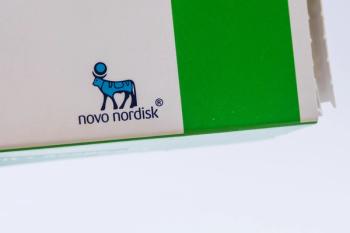
Pharmacist-Led Opioid Deprescribing Is Safe, Effective
Researchers presented findings from a pharmacist-led pilot program for opioid deprescribing among patients in a palliative care clinic.
Pharmacist-led opioid deprescribing was deemed safe and effective based on results from a pilot program consisting of palliative care patients who achieved cancer remission, according to study findings published in the Journal of Pain and Symptom Management.1
“Pain is the most common symptom experienced by patients [with cancer], and opioids remain the mainstay of cancer pain management,” wrote authors of the study. “As pain and symptom management experts, specialist palliative care clinicians are often involved with the prescribing of opioids for cancer pain throughout the disease trajectory.”
According to National Cancer Institute data, 18.6 million cancer survivors are currently living in the US, and by 2040, 53% of patients are projected to live 5 or more years following their cancer diagnosis.2 These improvements in cancer outcomes can be attributed significantly to advancements in oncology,1 leading to a dramatic increase in the need for pain medications and management initiatives.
READ MORE:
However, the need for proper pain management is significant outside of cancer care alone. But with growing concerns of opioid use and calls for deprescribing to combat the nationwide crisis surrounding these medications, researchers are looking for alternative ways of improving outcomes, decreasing costs, and ultimately making treatment regimens safe and effective.
“A great deal of progress has been made in the role of the pharmacist in supporting individuals with [opioid use disorder] (OUD) in the last 2 decades, and new pharmacy practice roles have developed out of opportunities to better serve patients with [substance use disorder]/OUD,” wrote authors of a study published in Substance Abuse and Rehabilitation.3
Not only has the collective approach to opioid and pain management made progress in recent history, but pharmacists, too, are consistently separating themselves among other providers for their knowledge on medications and patient counseling abilities. However, despite the aforementioned progress and advancements, opioids remain a high-risk yet extremely effective treatment option for pain, leading to outcomes of substance use disorder for those taking opioids and persistent pain for patients avoiding them.
“Given the known risks and the lack of evidence to support long-term opioid therapy (LTOT) in the population of patients who achieve cancer remission, we developed a pharmacist-led opioid deprescribing program for patients who have achieved cancer remission and remain under the care of our palliative care clinic,” continued the authors of the current study.1 “In this manuscript, we describe this novel approach and report on the feasibility and success of our pilot program.”
Among the growing evidence of pharmacists expanding their role, researchers wanted to address the 2-pronged challenges within pain management and opioid use.
Researchers introduced a pharmacist-led opioid deprescribing campaign in a specialty palliative care clinic. Developed and implemented by practicing pharmacists, the program ran from April 2022 to May 2023 and was conducted at a clinic seeing an average of 1100 patients every year.1
Serving as a personalized resource for patients undergoing opioid treatment and deprescribing, pharmacists participating in the pilot program were first responsible for building rapport with patients, exploring treatment goals and expectations, and completing patient assessments.
After the initial visit, follow-up meetings were conducted with patients seeking consultations either weekly or up to every 3 months. Finally, aside from providing general treatment plans and assistance, pharmacists also worked with patients’ primary prescribers to document an opioid deprescribing plan.
The main outcomes researchers sought throughout the pharmacist-led resource were the feasibility of the pilot program and the impact of pharmacists’ involvement throughout the initiative. Pharmacists participating in the study’s pilot program met with 20 palliative care patients (mean age, 53.5 years; 65% women).1
Of the 20 patients participating in the study, 18 (90%) followed up with their respective pharmacist from the pilot program. Among the individuals who followed up, researchers identified 4 opioid-tapering strategies that pharmacists employed as part of the program: decreasing long-acting opioid doses (44.4%), rotating to buprenorphine/naloxone (27.8%), increasing the short-acting opioid dosing interval (16.7%), and decreasing the quantity of short-acting tablets dispensed (11.1%).
For the official outcomes regarding opioid deprescribing, patients in the program were able to reduce oral morphine equivalents (OMEs) by an average of 22%. At each visit, the average OME reduction was 10%.
“Pharmacists have an ideal set of skills to lead this clinical pilot given their mediation expertise, risk reduction mentality, collaborative relationship with other members of the interprofessional health care team, patient education skills, patient-centered care philosophy, and detailed eye for close monitoring and follow-up,” the authors continued.1 “Small reductions over a long period of time could minimize mental health risks associated with more aggressive tapering strategies.”
With significant reductions in patients’ OMEs or opioid medications, the results of this study reinforce the pharmacist’s ability to administer deprescribing services, especially for a drug class that the public has been attempting to avoid for multiple decades. Opportunities to expand programs such as this pilot study can make a significant difference both within the pain management space and for pharmacists looking to expand their scope of practice.
“Our pharmacist-led opioid deprescribing pilot program was safe and effective in the initiation of opioid tapering plans and reducing OMEs for a population of patients who have achieved cancer remission, although resource intensive,” concluded the study authors.1 “Opportunity exists for large-scale, clinical innovations research to strategize best practices to ensure pain management needs are met for patients who achieve cancer remission.”
READ MORE:
Pharmacy practice is always changing. Stay ahead of the curve: Sign up for our
References
1. Lowry MF, Lee S, Hoke MF, et al. Pharmacist-led opioid deprescribing pilot clinic within outpatient palliative care. JPSM. Published online July 30, 2025. https://doi.org/10.1016/j.jpainsymman.2025.07.020
2. Statistics and graphs. National Cancer Institute. Accessed August 11, 2025. https://cancercontrol.cancer.gov/ocs/statistics#
3. Kosobuski L, O'Donnell C, Koh-Knox Sharp CP, et al. The role of the pharmacist in combating the opioid crisis: an update. Subst Abuse Rehabil. 2022;13:127-138. doi:10.2147/SAR.S351096
Newsletter
Pharmacy practice is always changing. Stay ahead of the curve with the Drug Topics newsletter and get the latest drug information, industry trends, and patient care tips.






































































































































